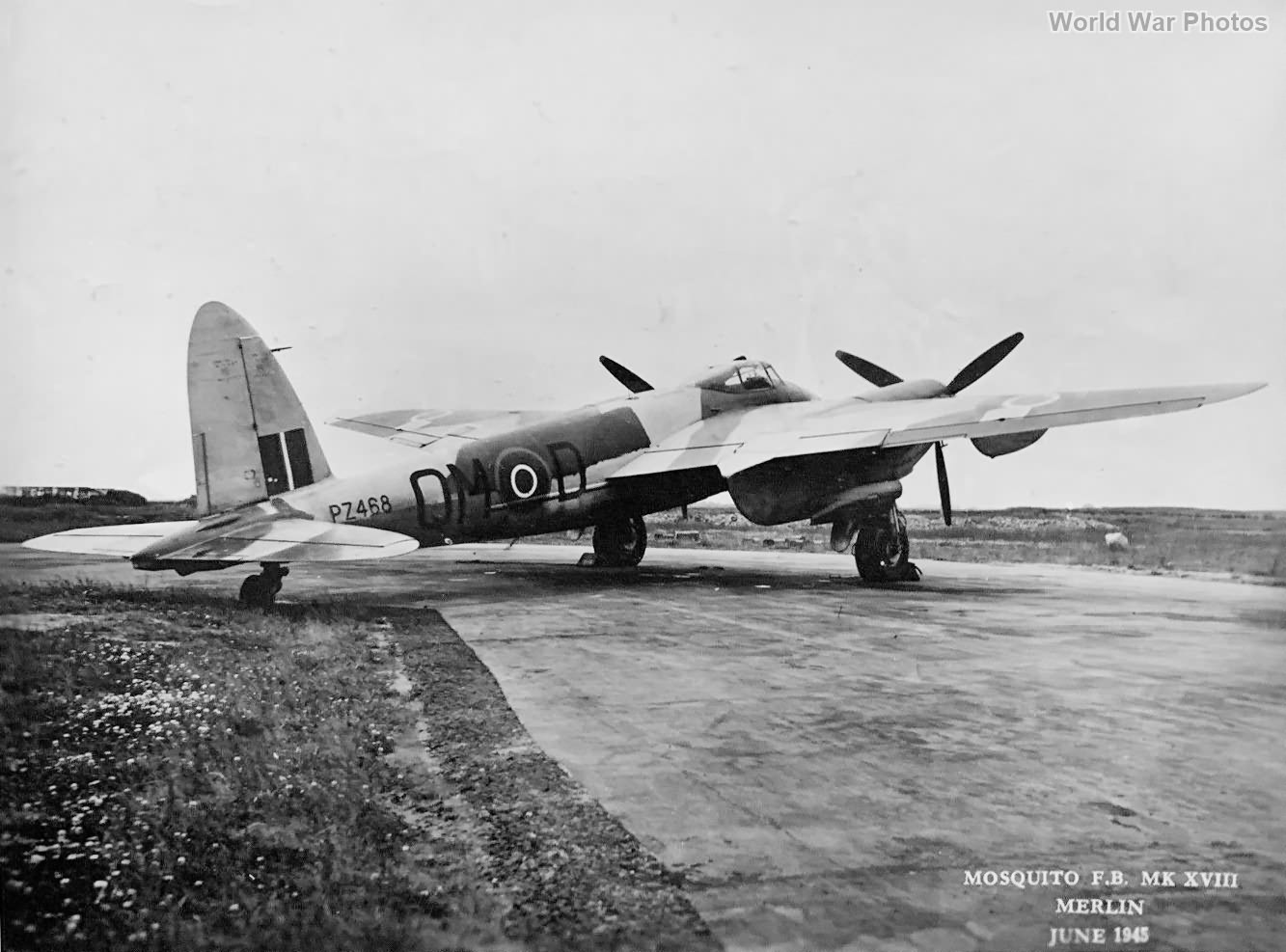The operational history of the Mosquito Mk.XVIII “Tsetse” demonstrates the challenges and mixed results of using the aircraft in combat, particularly in anti-submarine and anti-shipping roles. Initially conceived as a flying artillery piece with a powerful 6-pounder Molins gun, the Tsetse’s role evolved as it became clear that other methods, such as unguided aerial rockets, were more effective for many of the tasks it was designed to perform.
Transition to Coastal Command:
- The first three Tsetse aircraft (HX902-HX904) were delivered to 618 Squadron in late 1943 but were quickly reassigned to 248 Squadron of Coastal Command at RAF Predannack, Cornwall. The squadron specialized in anti-shipping and anti-submarine missions, particularly in the Bay of Biscay and along the French coastline.
- Early missions, flown in October and November 1943, involved the Tsetse engaging German Kriegsmarine submarines (U-Boats). However, the Molins gun, despite its power, proved challenging to use in combat. It had a low rate of fire and was difficult to aim under fire from well-defended U-Boats, which were often escorted by heavily armed surface ships near their bases.
Limited Success in Anti-Submarine Warfare:
- While the Molins gun was designed to penetrate submarine hulls, it was only moderately successful. The only confirmed sinking of a U-Boat by a Tsetse occurred on March 25, 1944, when U-976 was sunk off Saint-Nazaire by aircraft HX903/I and MM425/L of 618 Squadron’s Special Detachment.
- The Tsetse struggled to make a significant impact in the anti-submarine role. Submarine hulls were difficult to hit and penetrate, and the gun’s slow firing rate made it inadequate for this task.
Effectiveness Against Surface Vessels:
- The Tsetse proved much more effective in anti-shipping missions. German surface vessels presented larger and more vulnerable targets, and the 6-pounder rounds were highly effective, even against armored flak ships.
- The Special Detachment of 618 Squadron received two additional Mk.XVIIIs (MM424-425) in February 1944, but the aircraft faced tough opposition. One Tsetse was shot down, and another (HX903) crashed in a collision while returning from patrol in June 1944.
Transfer to 248 Squadron and Operations in Norway:
- By May 1944, the Tsetse was permanently transferred to 248 Squadron as ‘C’ Flight, continuing its operations as part of the Banff Strike Wing. The aircraft participated in raids against German shipping in Norwegian waters, but these missions were heavily contested by German fighters, resulting in some losses.
- Mosquito FB.VI fighter-bombers often escorted the Tsetse during these raids, and on occasion, they were also supported by RAF or US-flown Mustangs. Despite the challenging environment, the Tsetse continued to perform strikes against enemy vessels.
Decline of the Tsetse:
- By the end of December 1944, a few more Tsetse aircraft had joined 248 Squadron (NT224-225, PZ251-252, PZ300-301, PZ346, PZ468). However, the aircraft’s production was limited, and only a small number were ever operational.
- In March 1945, the remaining Tsetse aircraft were transferred to 254 Squadron, which operated Beaufighters at RAF North Coates. Their new role was to attack Biber midget submarines along the Dutch and German coasts. These missions met with limited success, with one possible Biber sinking on April 12, 1945.
